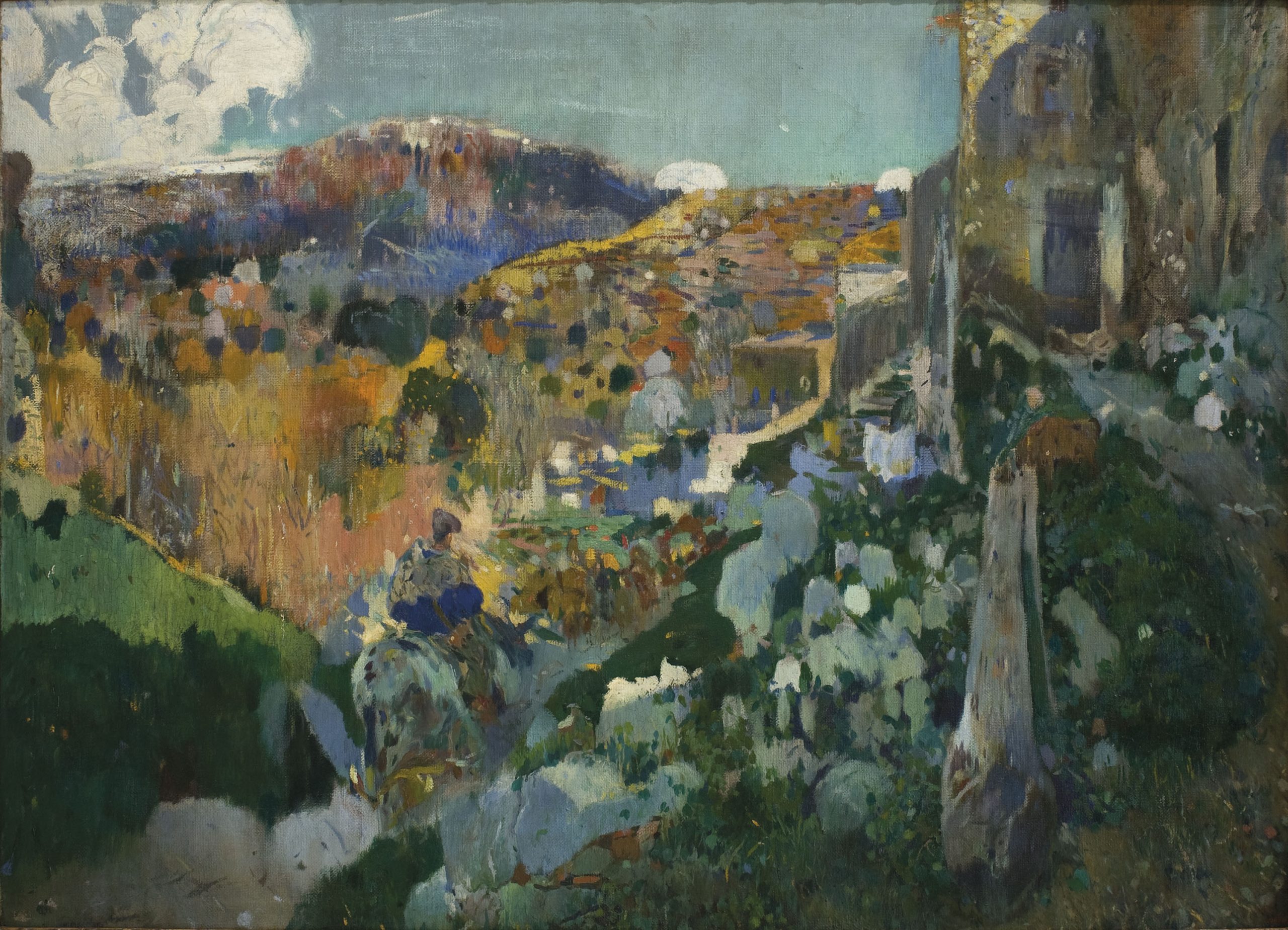Gemma Reguant and Teresa González
The museum has long used art as a resource that highlights the value of the cultural institutions as agents with the potential to be beneficial to the well-being of people.
Among the projects that have been developed in the Museu Nacional we want to highlight a methodological practice that was implemented in the midst of the Covid-19 pandemic in nursing homes. This methodology, devised by Gemma Reguant, teacher of breathing, voice and oral expression, is what is called Breathing paintings.
Covid-19 highlighted the need to establish ways of communicating that would ensure the well-being of people and alleviate their situation of physical and emotional isolation. The lack of air in a real and figurative sense shaped the landscape of the illness: it has been suffered by the people affected by Covid, but also those who have felt alone or isolated in their home, the medical staff fighting against the pandemic, people from social organisations, overwhelmed and overcome by what was happening, and especially the elderly living in care homes.
For this reason, so as to provide a bit of fresh air and reconnect with life, the technique of Breathing paintings was resumed. This is a project, based on a selection of works in the museum and accompanied by Gemma Reguant, aimed at bringing health benefits to people through breathing, and sensory and body awareness. This new experience was carried out in person in the care homes and was experienced in the museum in front of works of art with other groups.
We now offer you 5 video capsules for you to experience calmly at home, but first let Gemma Reguant herself tell you where it comes from and what the methodology consists of.





I am often asked: What is this Breathing Painting technique?
And there are a thousand answers I could give, and I’m sure you’ll express it in your own way after experiencing it, but for now I would say that:
It is a way to open our senses to connect with, and enjoy, our inner sensibilities.
It’s a good excuse for breathing better and eliminating stress.
And it is a proposal for enjoying art more in a corporeal and conscious way.
It could be summed up by saying that the Breathing Painting technique is a methodology that mixes the life of art with the life of breathing.
Both breathing and art offer fullness of life and mixing them vitalises us.
Do you want to know how it came about? It has a long history with a lot of practical research on my part. And a beautiful part of this long history has to do with this museum, so it’s great that the first videos made of this technique are in the Museu Nacional d’Art de Catalunya.
In 1989, I began to breathe works of art with prints and with those books that weighed so much and that I took to the classes on Sensory Awareness or about Voice and Oral Expression. I worked above all with theatre students, as well as with some journalists or people who wanted to direct or write theatre.
One day I was asked to give oral expression classes at the MNAC for museum educators, and then I applied the method. For the first time, we were experimenting with the actual work, not the prints. It was 1994 and you could see how the effects of breathing, of enlarging one’s own space, and of all the benefits already found before, were multiplied.
Over time, after experimenting in other contexts, the method has matured and here it is in online format: Five Capsules for Breathing Paintings from home or anywhere.
And we wonder, Will it work in this format?
We believe so, we firmly believe in it and trust that we will not be wrong.
Maybe a small percentage of what happens in person will be lost, but we will gain the chance to reach many more people by providing good things to those who would not go physically to the museum or who don’t do so very often.
At the same time, they will have the advantage of being able to do it again and again, and repeat the experience and carry out a process with the painting so that it may become part of the sensory history itself.
What will we find in these Breathing Paintings capsules?
We’ll start with a presentation of some small exercises to get a better insight into breathing and the experience.
Once you’ve tried the experience of breathing gently with me, we’ll go on to breathing in front of the painting calmly following some proposals I’ll suggest.
You should keep in mind that I’m doing the exercise with you and that in some way we are also communicating corporeally (which is how it works best). I have a rational mind resting a little; so breathe … breathe with me, effortlessly, without any effort at all, listen to your breathing and let it calm down with the given guidelines … and if a sentence sounds a bit strange, it’s because I’m breathing with you and completely in the body, which takes me away from rational logic and maybe at some point I stop in mid-sentence or something like that. Everything can be understood, I think, don’t worry.
Then when you close your eyes I will keep talking to you and then straight away I will ask you to open your eyes and I will accompany you for a bit, while you are in front of the painting suggesting that you experiment with all your senses. Trust me. It’s beautiful what you’ll find when you open your eyes and you look while breathing. It will probably be a pleasant surprise.
The Museu Nacional d’Art de Catalunya and I really want you to enjoy the Breathing Paintings experience.







